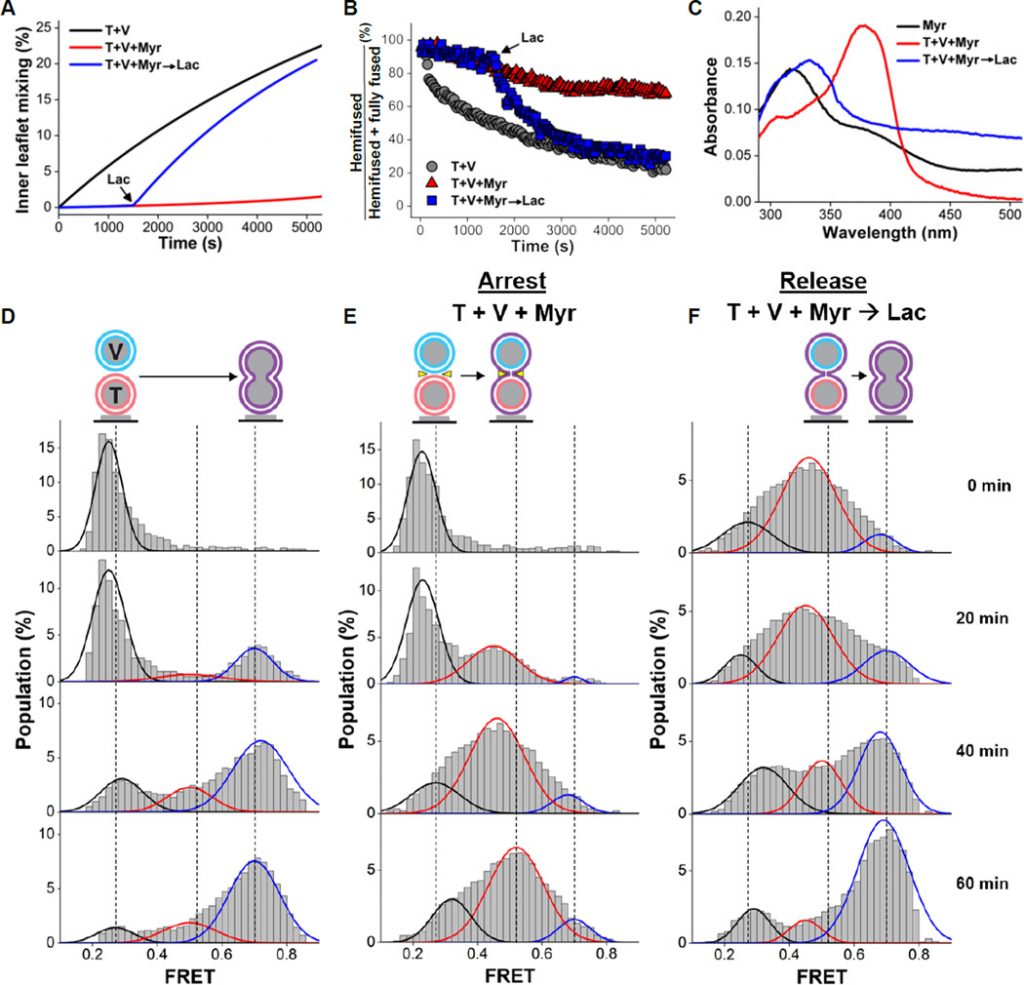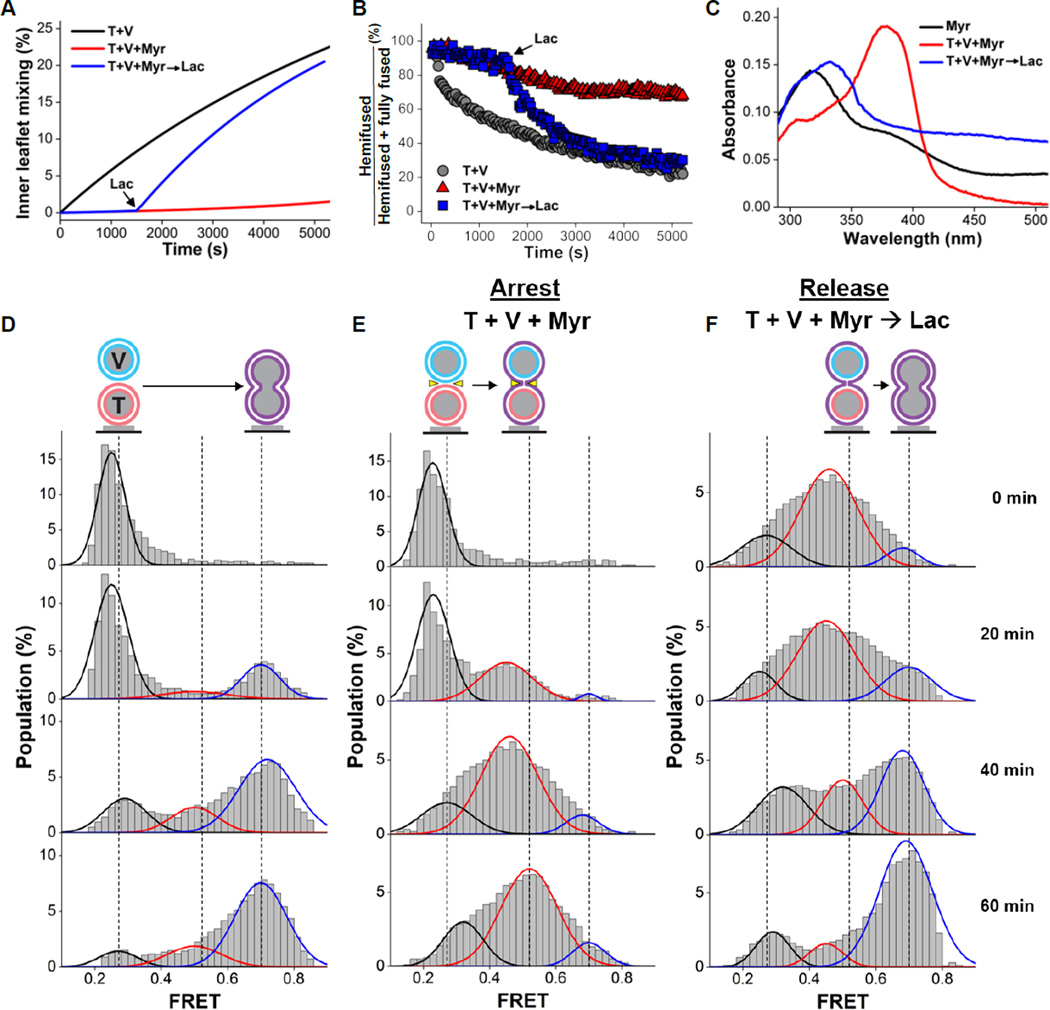Membrane fusion is mediated by the SNARE complicated which is fashioned by a zippering course of.
Here, we developed a chemical controller for the progress of membrane fusion. A hemifusion state was arrested by a polyphenol myricetin which binds to the SNARE complicated.
The arrest of membrane fusion was rescued by an enzyme laccase that removes myricetin from the SNARE complicated. The rescued hemifusion state was metastable and long-lived with a decay fixed of 39 min.
This membrane fusion controller was utilized to delineate how Ca(2+) stimulates fusion-pore formation in a millisecond time scale. We discovered, utilizing a single-vesicle fusion assay, that such myricetin-primed vesicles with synaptotagmin 1 reply synchronously to physiological concentrations of Ca(2+). When 10 μM Ca(2+) was added to the hemifused vesicles, the bulk of vesicles quickly superior to fusion pores with a time fixed of 16.2 ms.
Thus, the outcomes exhibit {that a} minimal exocytotic membrane fusion equipment composed of SNAREs and synaptotagmin 1 is succesful of driving membrane fusion in a millisecond time scale when a correct vesicle priming is established.
The chemical controller of SNARE-driven membrane fusion ought to function a flexible software for investigating the differential roles of numerous synaptic proteins in discrete fusion steps.

A Transition from Localized to Strongly Correlated Electron Behavior and Mixed Valence Driven by Physical or Chemical Pressure in ACo2As2 (A = Eu and Ca).
We exhibit that the motion of bodily strain, chemical compression, or aliovalent substitution in ACo2As2 (A = Eu and Ca) has a normal consequence of inflicting these antiferromagnetic supplies to grow to be ferromagnets. In all instances, the combined valence triggered on the electropositive A web site leads to the rise of the Co 3d density of states on the Fermi stage.
Remarkably, the dramatic alteration of magnetic conduct outcomes from the very minor (<0.15 electron) change within the inhabitants of the 3d orbitals.
The combined valence state of Eu noticed within the high-pressure (HP) type of EuCo2As2 reveals a outstanding stability, attaining the typical oxidation state of +2.25 at 12.6 GPa. In the case of CaCo2As2, substituting even 10% of Eu or La into the Ca web site causes ferromagnetic ordering of Co moments. Similar to HP-EuCo2As2, the itinerant 3d ferromagnetism emerges from digital doping into the Co layer as a result of of chemical compression of Eu websites in Ca0.9Eu0.1Co1.91As2 or direct electron doping in Ca0.85La0.15Co1.89As2.
The outcomes reported herein exhibit the overall chance of amplifying minor localized digital results to realize main adjustments in materials’s properties through involvement of strongly correlated electrons.

